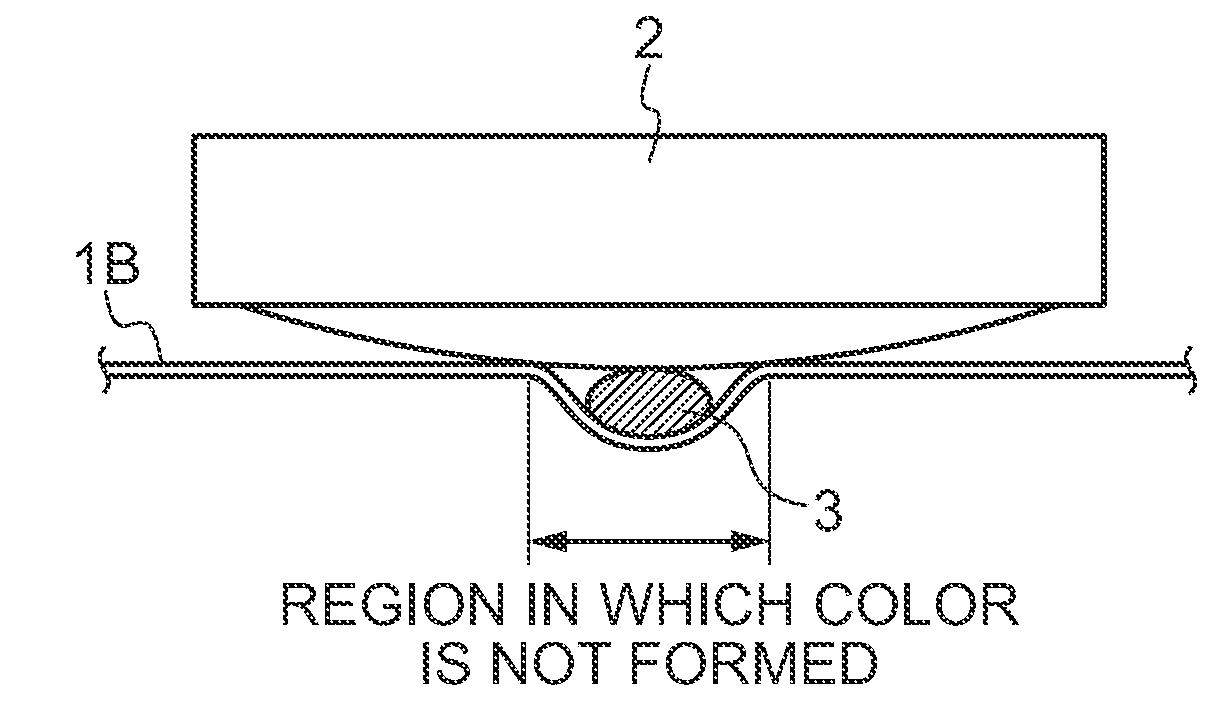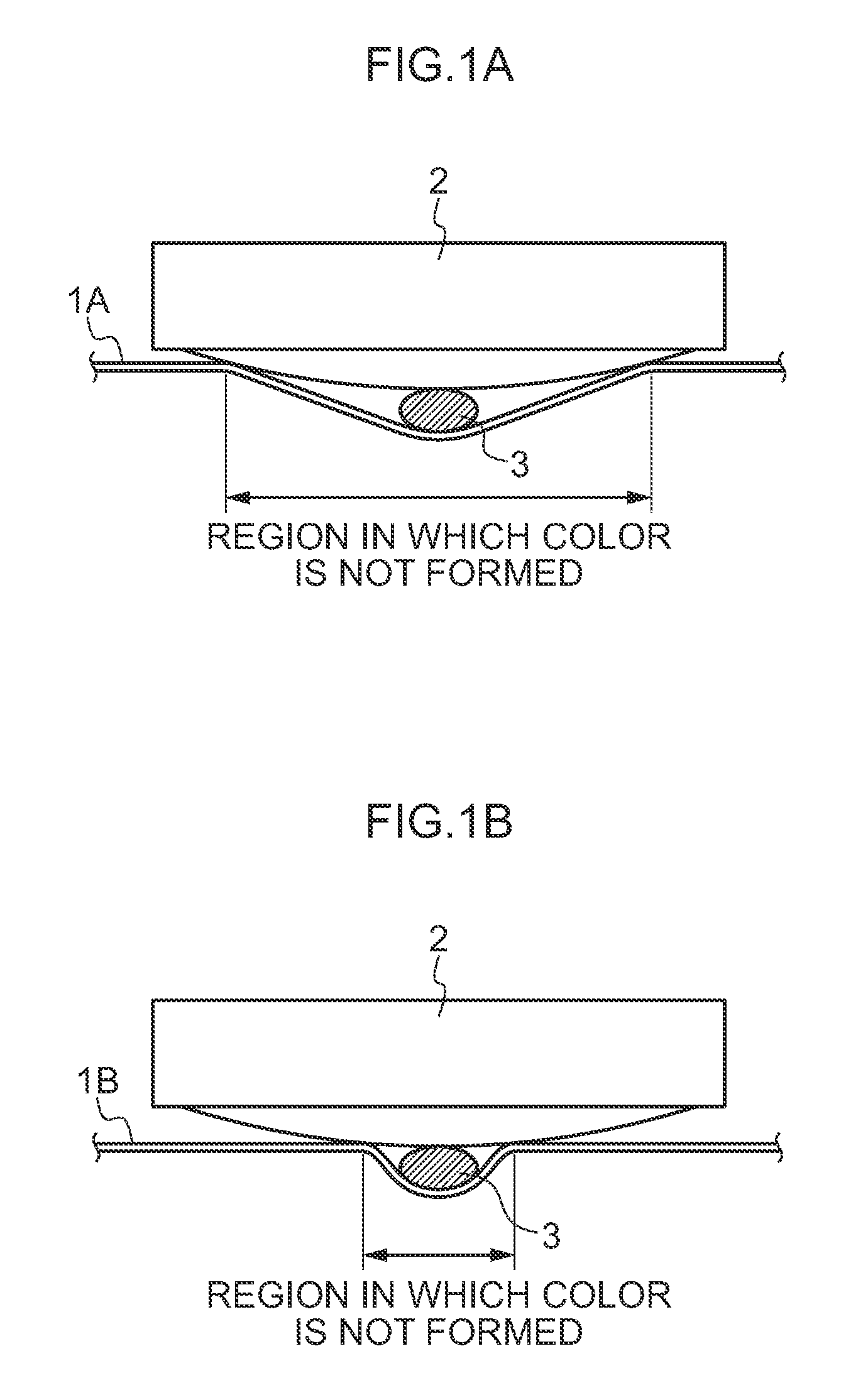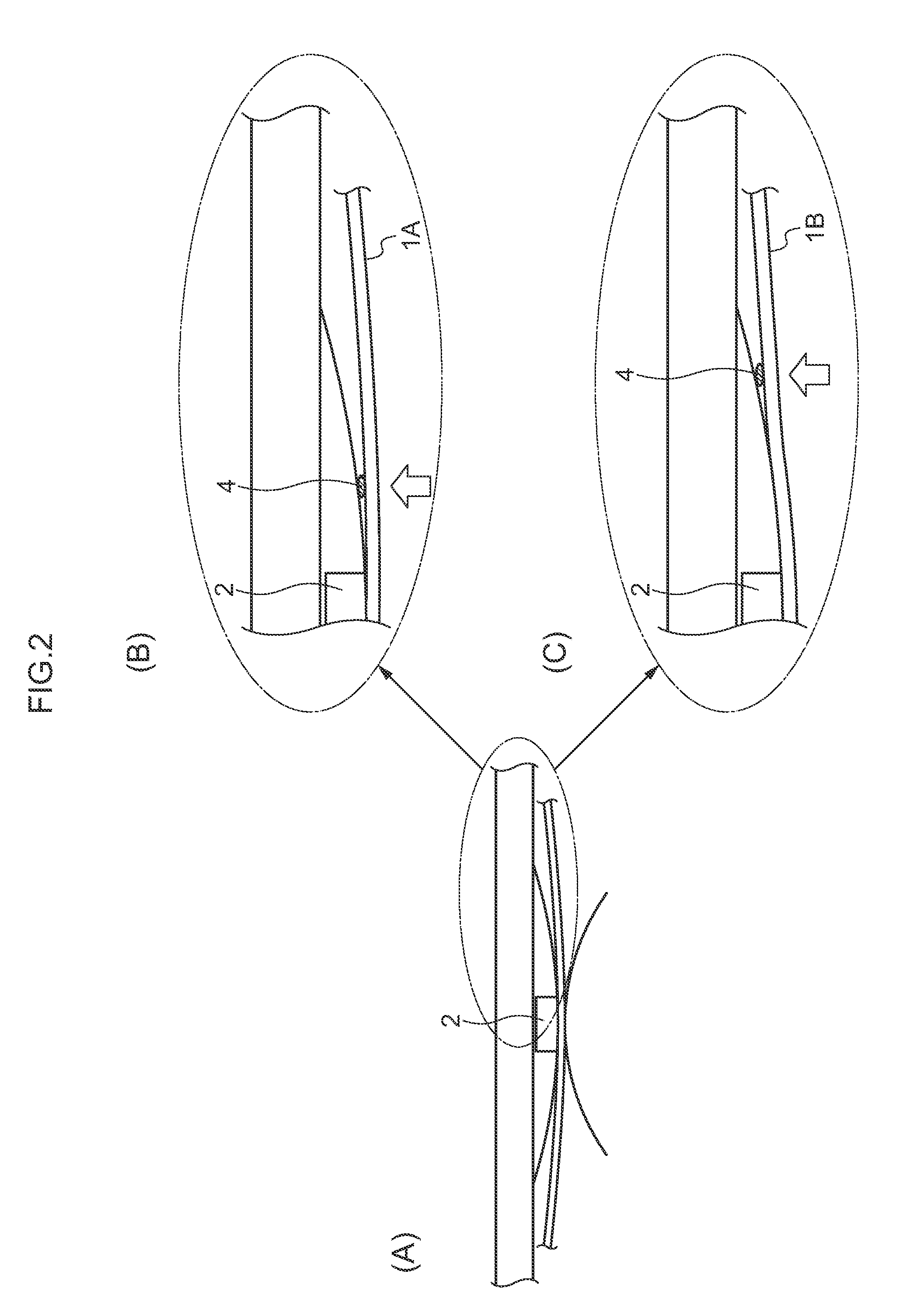Thermosensitive recording material
a technology of recording material and thermosensitive material, which is applied in thermography, duplicating/marking methods, printing, etc., can solve the problems that the reduction of image defects cannot be said to be satisfactory, and achieve the effects of improving color density, preventing deposits, and paper peeling
- Summary
- Abstract
- Description
- Claims
- Application Information
AI Technical Summary
Benefits of technology
Problems solved by technology
Method used
Image
Examples
example 1
[0193][Preparation of Coating Liquid for Undercoating Layer]
[0194]100 parts of SBR latex (polymer particles, SN-307: manufactured by Sumitomo Naugatuck Co., Ltd.) with a concentration of 45%, 50 parts of polyvinyl alcohol (“binder”, trade name: PVA-117, manufactured by Kuraray Co., Ltd.) with a concentration of 5%, and 2.0 parts of a 2% aqueous solution of sodium (2-ethylhexyl)sulfosuccinate were mixed to prepare an undercoating liquid (1).
[0195][Preparation of Undercoating Layer Coated Support]
[0196]A void-containing PET support (CRISPER-K2312, manufactured by Toyobo Co., Ltd.) having a thickness of 50 μm was used as a support. The undercoating liquid (1) was applied on the surface of the support using a wire bar so that the post-drying coating amount would become 4.0 g / m2, followed by drying in an oven at 50° C. to give an undercoating layer coated support (1). The support had a type D durometer hardness of 66 as defined in accordance with ISO 7619:2004, and a smoothness of 6677 s...
example 2
[0207][Preparation of Coating Liquid for Protective Layer]
[0208]50 parts of polyvinyl alcohol (EP-130, manufactured by Denki Kagaku Kogyo Kabushiki Kaisha) with a concentration of 5%, 0.8 parts of HYDRIN Z-7 (manufactured by Chukyo Yushi Co., Ltd.) with a concentration of 31%, 0.8 parts of HYDRIN D337 (manufactured by Chukyo Yushi Co., Ltd.) with a concentration of 31%, 2.5 parts of zirconium sulfate with a concentration of 1% and 30 parts of water were mixed to give a coating liquid for a protective layer.
[0209][Preparation of Undercoating Layer Coated Support]
[0210]An undercoating layer coated support (2) was obtained in the same manner as in Example 1, except that SBR latex was changed to JURYMER ET410 (manufactured by Nihon Junyaku Co., Ltd.), and the post-drying coating amount was to be 4.0 g / m2, in the preparation of the undercoating liquid (1) of Example 1.
[0211][Preparation of Thermosensitive Recording Material]
[0212]The coating liquid for thermosensitive color-forming layer...
example 3
[0213]A thermosensitive recording material (3) was obtained in the same manner as in Example 1, except that the support was changed to a 75 μm transparent PET support, the SBR latex was changed to hollow particles (Hollow Plastic Pigment HPP-055, manufactured by CMKOR Co., Ltd.), and the post-drying coating amount of the undercoating layer was 2.0 g / m2. The support had a type D durometer hardness of 84 as defined in accordance with ISO 7619:2004, and a smoothness of 12300 sec as defined in accordance with ISO 5627:1995.
PUM
| Property | Measurement | Unit |
|---|---|---|
| particle diameter | aaaaa | aaaaa |
| temperature | aaaaa | aaaaa |
| thermal conductivity | aaaaa | aaaaa |
Abstract
Description
Claims
Application Information
 Login to View More
Login to View More - R&D
- Intellectual Property
- Life Sciences
- Materials
- Tech Scout
- Unparalleled Data Quality
- Higher Quality Content
- 60% Fewer Hallucinations
Browse by: Latest US Patents, China's latest patents, Technical Efficacy Thesaurus, Application Domain, Technology Topic, Popular Technical Reports.
© 2025 PatSnap. All rights reserved.Legal|Privacy policy|Modern Slavery Act Transparency Statement|Sitemap|About US| Contact US: help@patsnap.com



